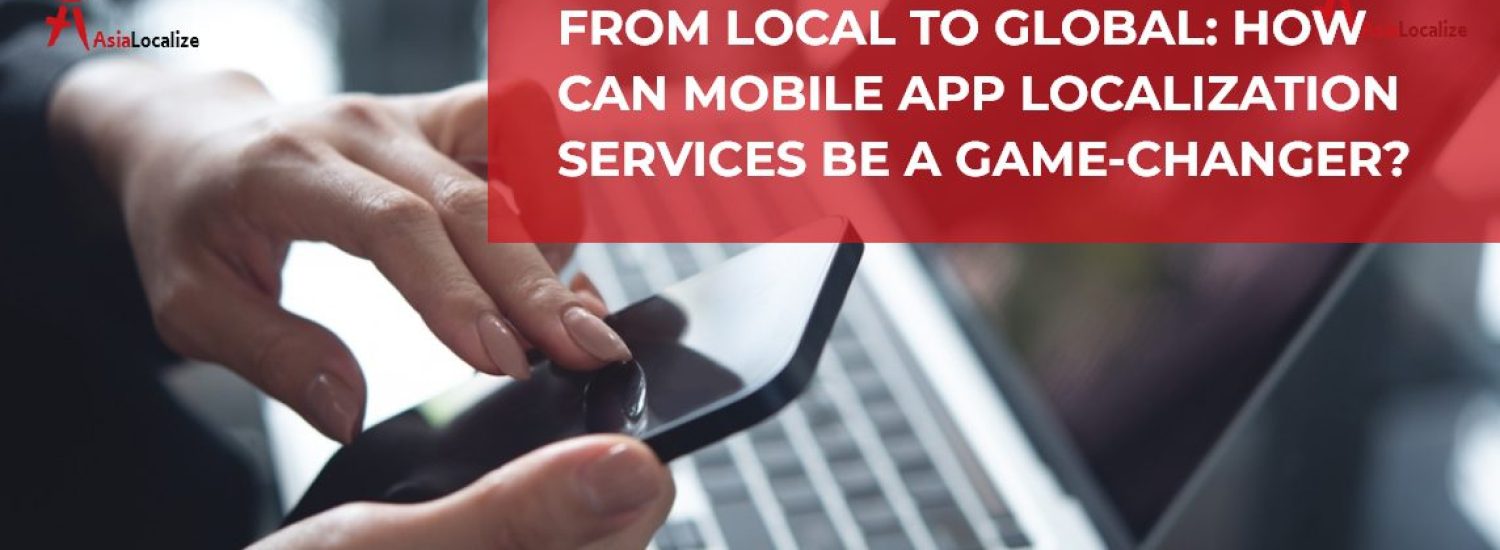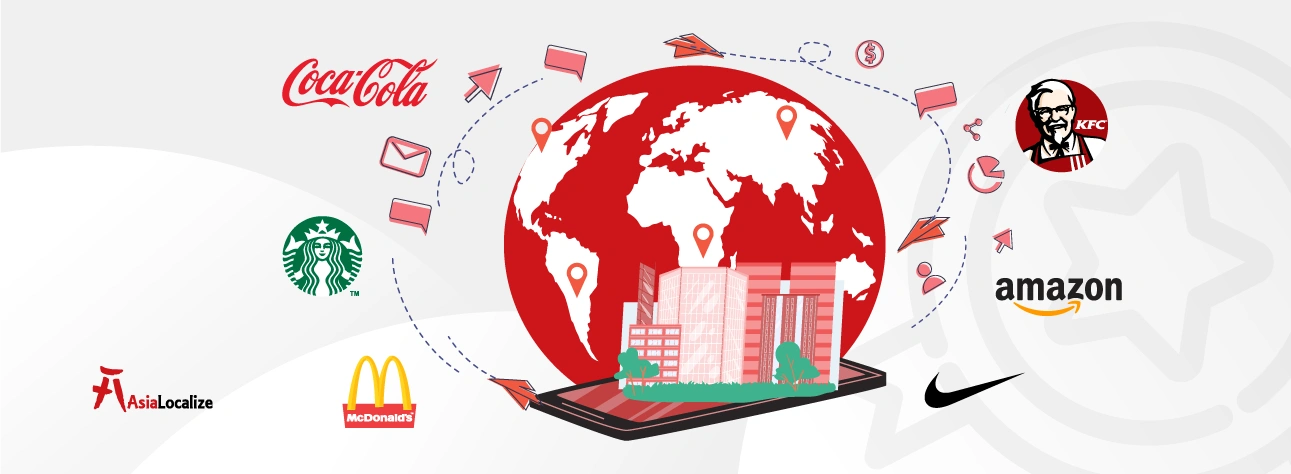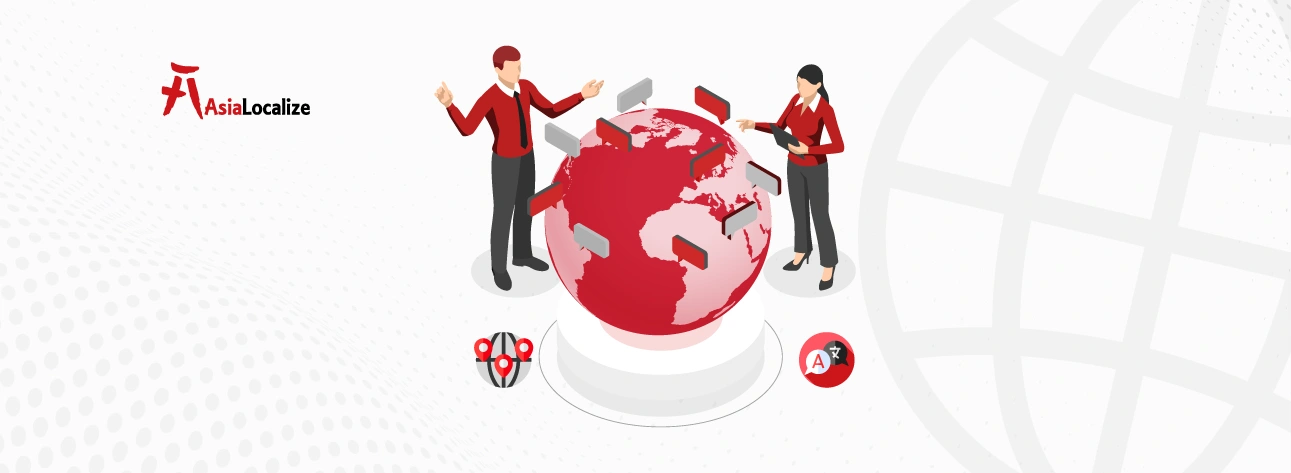Our screens have become the gateway to a world of endless possibilities, just a tap away. From thrilling games to secure banking and grocery shopping, our fingertips hold the key to a universe of exciting experiences.
Everything can be done now in the comfort of our couches, using just our mobile devices! With 299 downloaded apps in 2023, continuing to grow by the second, mobile apps revolutionized how people deal with their daily lives.
However, language barriers still hold many from enjoying the accessibility and convenience of hundreds, thousands, and millions of apps. And yours can be one of them.
You’ve developed an incredible mobile app that has the potential to change the world, but there’s just one problem – it’s only available in one language, which might not be the language of a potential user who is looking for an app like yours in China, Russia, or Saudi Arabia.
So, what should you do if you don’t want to limit the reach of your mobile app? The answer is simple: mobile app localization. In this blog, we will guide you through all the things you need to know about app localization, providing the insights and expertise you need to take your app to the next level.
What is Mobile App Localization?
Mobile app localization is the process of adapting your app to resonate with users in a target market or region on the linguistic and cultural levels for seamless usability and higher in-app engagement. This means that the process totally differs from translation, which mainly deals with the linguistic conversion of the app’s textual elements from one language to another.
Localization, instead, takes into consideration the overall user experience as it tailors all the touch points of your app to meet the preferences and unique needs of the target audience, from UI/UX and in-app textual content to design multimedia, and app store listings.
To give you a better overview of what it means to localize a mobile app, have a look at the UI of the popular eCommerce app AliExpress in two versions of the app targeting users in the US and Egypt.

If you think the only difference lies in the language, consider this quick list of contrasts between the two versions:
“Black Friday” changed into “Super Friday,” which is not a literal translation of the term but rather a more culturally sensitive one. Why? It’s because Friday for Muslims is a very sacred day of communal prayer and referring to it as “black” is considered offensive.
The offers end on Nov 29th in the US, but on the 30th in Egypt; it might be because Friday is still considered part of the weekend for many Arabs.
The time format is different: 12-hour format vs. 24-hour format.
Even the screenshots used in the app store details are different in Egypt and the US in color and graphics, as you can see.

The end result of app localization is an almost new version of your app that appears as though it was originally designed for that target market, allowing users to engage with the app as effectively and intuitively as the local market audience.
Why Localize Your Mobile App?
Have you ever wondered why you should take the extra step to localize your app when simple translation seems like an easier and quicker option? Well, let’s simplify things for you. Both translation and localization are investments that you make, and like any investment, you anticipate a return on it.
When comparing the returns from both approaches, you’ll find the answer to your question: the return you get from your investment in localization far outweighs both the initial cost of localization and what you gain from translation alone.
Let us show you the return you get when you adopt a strategic localization approach for your mobile app.
Localization Gives Your App A Wider Global Reach
While English remains dominant in some markets, 80% of top-grossing mobile markets speak other languages. Asia for example is the biggest mobile app market in the world, generating alone the most revenue (US$162.90bn in 2022) of the global app market.
Between 2021 and the conclusion of 2022, China emerged as the world’s leading country for app downloads, registering a substantial 111 billion downloads from its user base, and India followed with around 29 billion downloads.
By 2030, mobile will be integrated into daily life for over 90% of Asians. regardless of their educational or economic status, or where they live.
These users want apps that speak their native languages, that resonate with their local culture. Why would they choose an app that alienates them with a language barrier? Even if they understand English, 65% of users would still prefer content in their native language.
Localization gives you an edge to lead in these strategic markets and any region you want to expand into. If your app is only available in English, imagine how many potential users you are missing out!
- Localization makes your app more accessible and culturally relevant for a wider audience base
- It makes it more visible for users searching in their native tongue in the target market
- It creates a more immersive, user-friendly experience for your target users
Together, these factors increase your app’s chances of being found, downloaded, and used.

Localizing Your App Boosts User Engagement
Whether it is a gaming app, a mobile banking app, or a food ordering one when you localize your app, you are not just translating words; you are creating a complete user experience that resonates with your target audience on the local level. You build a personalized experience that not only aligns with individual preferences but also feels tailor-made for each location.
Research shows that 74% of customers feel frustrated when website content is not personalized, and 63% of them stop purchasing from brands that use poor personalization tactics. Unfortunately, frustration and engagement rarely coexist.
Adapting your app to fit your user’s language and cultural nuances is a way to show that you care about their needs, embrace their differences, and want to provide them with the best possible experience.
And when users feel valued and understood, they become more able to connect and engage with your app and more likely to recommend it to others. 77% of buyers recommend a brand for its personalization efforts for new customers, which means you don’t only retain existing users and keep them engaged but even gain new ones.
To create a more personalized experience for its users in 220 countries, Airbnb localized its app in over 30 languages, connecting with them in a language that they understand, suggesting location-specific activities, and delivering exactly what users expect.

App Localization Boosts Visibility and Downloads Rate
There are more than 5 million apps on Google Play and App Store; how can you ensure your app is getting noticed by your target audience?
When you adopt a comprehensive localization strategy for your app that covers not only the localization of the app itself but also the all-important store listing, you make your app more visible to users in the specific region you are targeting searching in their own language. And better visibility boosts the probability of users downloading your app.
Let us show you how it works.
App store listings are the descriptions, screenshots, titles, and metadata associated with your app on platforms like Google Play and the App Store which are the first touchpoints between your app and its future users.
Localizing these details and integrating the right local keywords ensures that when users in a specific region look for an app like yours, your app pops up as the go-to solution instead of getting lost among local results.
Surprisingly, a recent study found that localization has the power to boost mobile apps’ visibility by 74% and the download rate by 38%; those are numbers that can make a real difference in a crowded marketplace.

Early Tips For Successful Mobile App Localization
Deciding to localize your app for a specific market is not always an easy one. Is that market the right one for expansion? Are there cultural nuances or regional differences that might affect the app’s reception? Does your app have a flexible design and codebase that can accommodate different languages and cultural contexts without a complete overhaul?
These considerations and more must be factored into your decision-making process to ensure that your app’s localization is not just a leap in the dark, but a strategic step towards global success.
The following early tips will help set your localization efforts up for success by properly laying the necessary groundwork from the start.
Plan For Localization Ahead
If you are about to build a mobile app for your business, it’s wise to plan for localization from the get-go even if global expansion isn’t on your immediate roadmap. lead to significant savings in time and money and accelerate your speed to market when you do decide to localize.
So how does internationalization do this? Simply put, internationalization creates a localization-friendly app with a flexible foundation by ensuring:
- The app’s architecture supports localization by having a codebase that’s designed to handle multiple languages, text directions (like right-to-left for Arabic), and various character sets.
- The app’s design is adaptable for different markets —- layouts are responsive to accommodate the expansion or contraction of text after translation, and images are culturally neutral or easily changeable.
But there is no need to freak out if you have already missed internationalization in the initial phases of app development. With the assistance of localization professionals and a bit of reworking and testing, you can still ensure your app is fully prepared to be localized for any market you might want to target.
Decide Which Market You Want To Target
You don’t just wake up and decide to expand your app’s reach into this or that market. It is a very strategic process that requires strategic planning and careful consideration rather than impulsive decisions. So how can you determine the most promising region for your initial localization effort?
- Analyze where your most engaged and dedicated users come from and see if you are getting a significant number of downloads from a particular market. A high concentration of users in a specific region can signal a ripe opportunity for expansion.
- Monitor your app’s download patterns. A surge in downloads from a certain area could suggest that your app is already gaining popularity there, indicating a market with high potential.
- Pay close attention to app reviews. A sudden increase in positive feedback from a particular market can be a strong indicator of where your app could flourish. You can also look in the reviews for common suggestions from users in different locations that could guide your localization efforts.
- Consider the technological infrastructure of the target market. High smartphone penetration and widespread internet access are critical for ensuring your app can reach and function for potential users in that market.
Understand Your Target Audience
Once you have determined the market you want to target, it’s time to understand your target audience. You will get to know their preferences, search habits, and needs, necessary knowledge that will drive the customization of your app to align with their expectations.
Conduct comprehensive market research to better understand user preferences and needs and gain a unique value proposition that sets you apart from competitors. The following question can help you along the way.
- Are there underserved niches or demographics in this market that your app could appeal to?
- What local dialects or linguistic nuances must be considered to ensure the app’s content feels native to these users?
- What features are most sought after by users in this market?
- How do local users typically discover and interact with apps? Are they more likely to rely on app store search recommendations from friends, or social media promotions?
- What keywords or phrases do they use when searching for apps like yours?
- What are the common pain points or gaps that your app can address for these users?
- What is the level of technological literacy among your target users, and how might this affect the complexity of your app’s interface and features?
- What are the preferred methods of payment and spending within the app for this audience? Do they favor one-time purchases, subscriptions, or in-app transactions?
The knowledge you gain from finding the right answers to these questions will guide the customization and positioning of your app to align with their expectations and increase its chances of success in the market.
Conduct A Competitive Analysis
Time to do some competitive research! It’s just as important as understanding your users, for it makes it easier to differentiate your app and reveals strategic insights for guiding its entry and positioning in the target market.
To begin, you need to map out the competitive field in your intended market. Identify both the local contenders and the international apps that have won the favor of your target demographic.
- Assess how these competitors position themselves. What unique selling points do they highlight? How is their branding perceived by the local audience?
- Evaluate what these competitors do well in terms of features, user experience, customer service, and marketing. Identify their weaknesses or areas where users express dissatisfaction to find the gaps that your app can fill.
- Analyze how competitors in the market reach out to their audience. Study their marketing channels, promotional tactics, and any cultural adaptions global apps have made for that market.
Based on your findings, refine your app’s value proposition to emphasize how it stands out in the chosen market. You can use these insights to optimize your launch strategy (maybe tailoring your app’s features, adjusting your pricing strategy, or planning a targeted marketing campaign).
Make Sure You Choose The Right Localization Partner
Now as your app stands on the verge of going global, what matters most at this point is making sure you collaborate with the right language service provider. We don’t want all your efforts to go to waste just because localization was carried out by an unprofessional agency.
While budget considerations are certainly important, going for the cheapest localization service can be a false economy because most often it comes with compromised quality, and with it also comes a bad reputation, unsatisfied users, and costly corrections and reworks.
Here’s a quick checklist for how to strike the essential balance between cost efficiency and high-quality localization when choosing your localization partner
- Prioritize expertise over price
- Choose providers that offer a full suite of localization services
- Look for Specialization in your industry
- Ensure that the agency has robust quality assurance processes in place
- Make sure the agency employs the latest translation technology tools for consistency and efficiency.
AsiaLocalize: A Localization Partner You Can Trust
Now that you’ve got an overview of Mobile app localization, you understand that everything starts with meticulous planning, which can’t be done without the guidance of a trusted language services provider.
At AsiaLocalize, we not only immerse ourselves in your business and study your needs, but we also have a team of native mobile app experts in over 120 languages to support your wild global ambitions.
At our core, we offer a suite of services designed to elevate your app above the rest. Our translation, editing, proofreading, and testing processes are meticulously crafted to produce outstanding results that not only meet but exceed your expectations. All of this is delivered on time and within your budget, each and every time.






